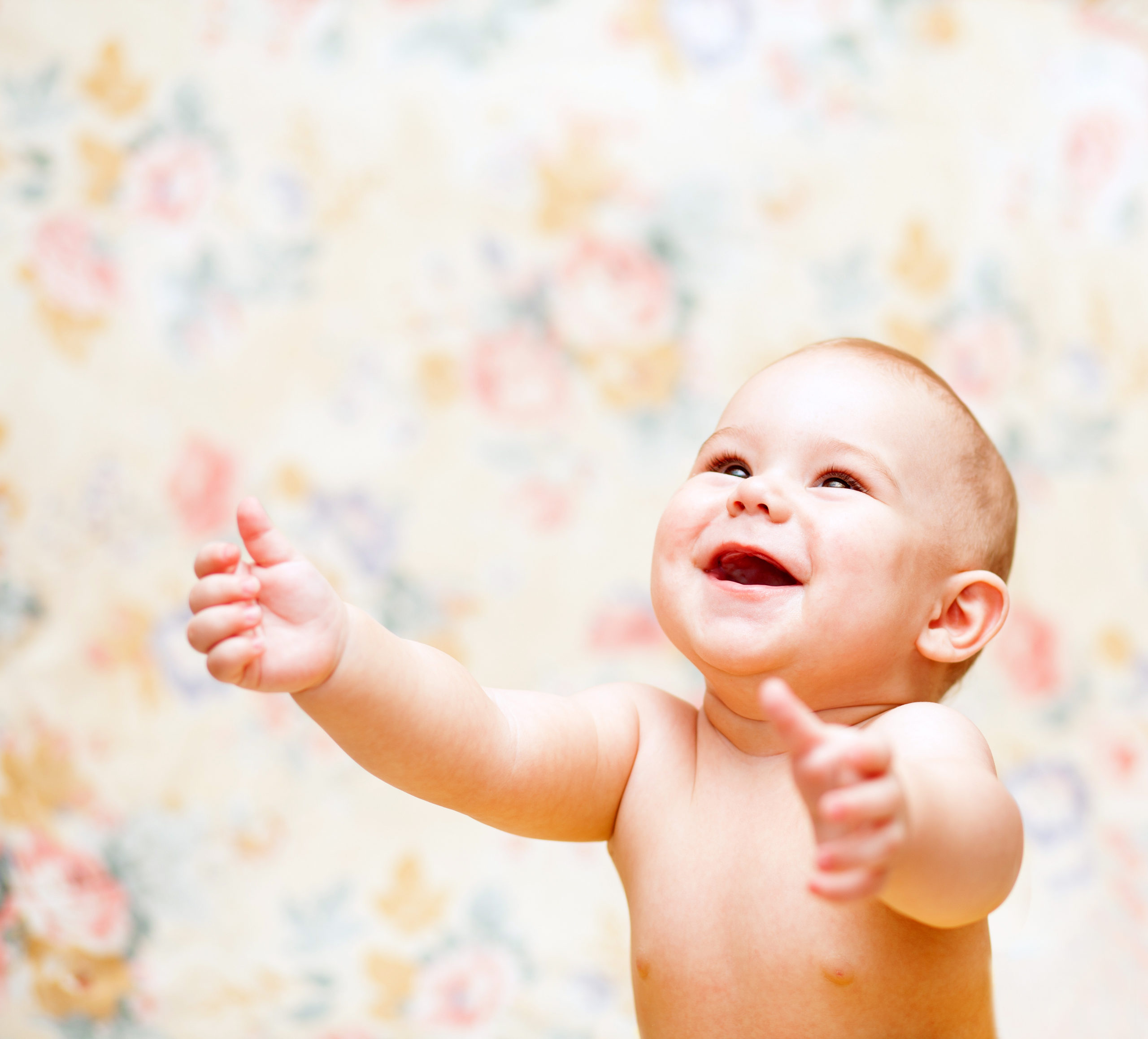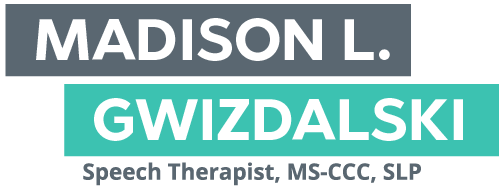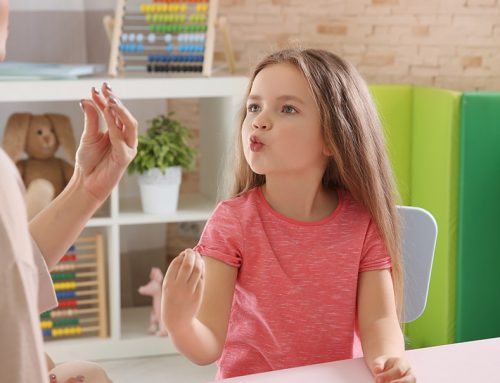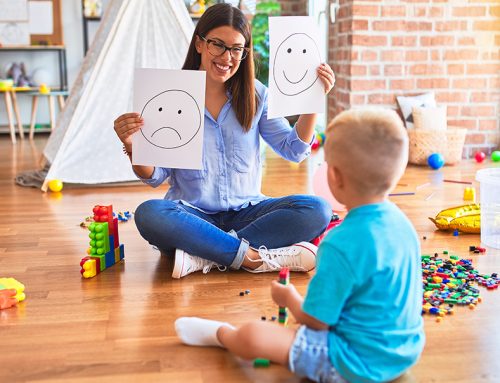Few things are quite as joyful as when your baby starts to become an active participant in your conversations and games. Think about a game of peek-a-boo, high fives, or tickles. When your baby starts to reach for your hand to initiate more of that game, you know that they are saying “I want more of this!”

Gestures are a crucial step in helping your baby communicate before words and while they are learning words. Thinking about this- if your baby says “up”, what does it mean? It could mean pick me up, or look up, or let’s go upstairs. But, if your baby says “up” and points to the airplane flying by, you now have clarification and can better share that moment with your child!
Gestures begin to develop around 9 months and steadily increase as your child gets older. In fact, between 9 and 16 months, babies should be using at least 2 new gestures each month! Gesture development is so important, that research indicates a child’s gesture development between 9 and 16 months predicts language abilities 2 years later! Wow! Let’s rephrase that again… children with adequate or better gesture use at 16 months presented with better language skills 2 years later. Children with poorer gesture use at 16 months had poorer language skills.
The following are common gestures cited by the First Words Project, a longitudinal study from Florida State University Autism Institute:
| Age | Gesture |
| 9 months |
|
| 10 months |
|
| 11 months |
|
| 12 months |
|
| 13 months |
|
| 14 months |
|
| 15 months |
|
| 16 months |
|
The study noted that the presence of specific gestures does not matter and may vary by culture or family. The important thing is that your child is using gestures to catapult them into a period of language learning and growth! As your baby develops, you will see that their gesture use becomes more sophisticated and symbolic, and begin to represent actual words.
You can incorporate gestures into any and every daily routine! Remember to always pair your gestures with words, so that your baby begins to associate meaning! Here are just a handful of tips:
- Give and take objects (playfully!) from your baby in a turn-taking routine
- Make sure to wave hi/bye to people- you can even wave hi/bye to objects, animals… anything!
- While reading a story, point and tap different pictures to draw your baby’s attention to them
- Clap and say “yay!” when your child does something exciting!
- When putting your baby to bed, use the “shhh” gesture and say night night
- Play a variety of social games, like peek-a-boo or tickle games
- Fingerplays like itsy bitsy spider and 5 little monkeys
If your child is not developing gestures appropriately, it may be beneficial to talk to a professional about early intervention services.


